Sarah Albee's Blog, page 6
March 14, 2016
Skype Day
Because I’m on a book deadline (make that two. No, three.), I’ve had to get super-efficient with my time but also try to carve out hours for what I love to do—and one of those things is Skyping with classrooms across the country. So my new tactic is to clump my short Skypes into one day a month. Last Thursday was my day-of-skyping. I spoke with kids in New York, New Jersey (twice), Indiana, Ohio, Kentucky, Minnesota, and Wisconsin. Here are some pictures I took, when I remembered to take them—sorry they’re blurry.
Thanks to all the teachers for organizing, and for all the kids for the great questions!

In Ms. Bowling’s class, the kindergartners wanted to show me the pictures they’d made.




Here’s a pic I shamelessly stole from a post Mr. Trenda had tweeted.

The post Skype Day appeared first on Sarah Albee.
March 4, 2016
Author Visits!
What a week! In the past eight days, I visited ten schools via Skype and three schools in person, in South Portland, Maine, Andover, Massachusetts, and Old Saybrook, Connecticut. It has been busy, but so awesome, and has reaffirmed my belief that I have the best job in the world.
A few highlights from my in-person visits:

Kindergarten and first grade kids at Dyer Elementary

Eager volunteers running up to the stage at West Elementary in Andover, Massachusetts.

The super-enthusiastic front office (celebrating Dr. Seuss’s birthday) at Goodwin School in Old Saybrook, CT

My pre-K volunteer, roaring like a dragon for the crowd at Goodwin Elementary school.
Yep, it was a great week. Visiting schools is one of the best parts of my job. Thanks to all the librarians, volunteer parents, and teachers for bringing authors to schools to meet kids. It’s truly a win-win.

The post Author Visits! appeared first on Sarah Albee.
February 25, 2016
World Read Aloud Day 2016
On Wednesday I Skyped with multiple classrooms around the country for World Read Aloud Day. Thanks to all the teachers and librarians for making time in their day for this super-fun event, and to all the kids for asking fantastic questions. Here are some highlights of the day (although I’m still not used to seeing myself on a huge screen, like the Great and Powerful Oz):

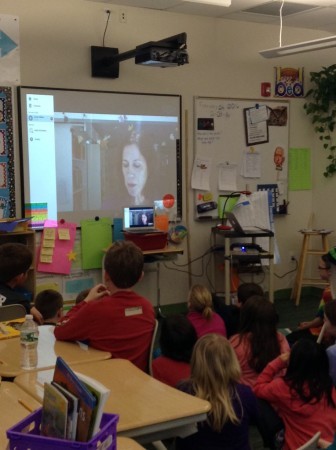
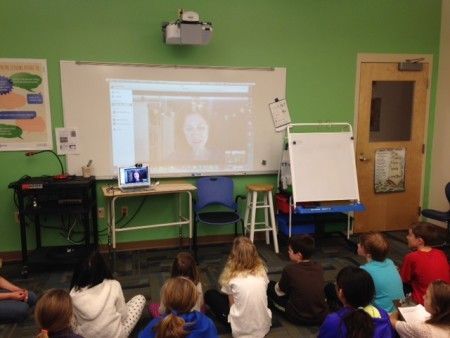
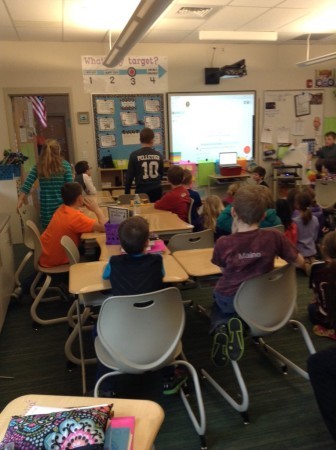

This was a “Google Hangout” with multiple classes, from Louisiana to New York. Way cool.

The post World Read Aloud Day 2016 appeared first on Sarah Albee.
February 22, 2016
Murderous Mosquitoes
I saw this table posted at the site of my friend, Paul, who is an infectious disease specialist. Have a closer look. It’s pretty amazing.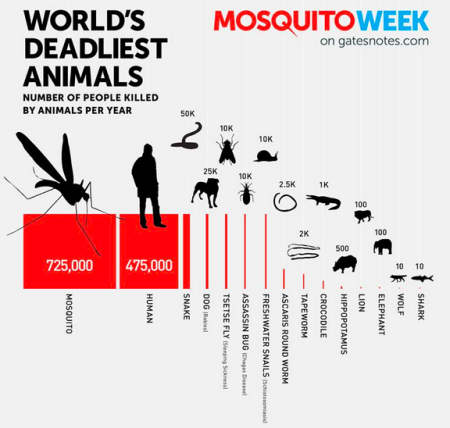
It’s from the Gates Foundation website. What’s striking is that the deadliest animal on the planet is not humans (which I would have predicted), but mosquitoes (which would have been my second guess). I suppose you’d have to define just what is meant by “deadly,” as humans have indirectly caused the most harm to the planet in the form of pollution, environmental degradation, and destruction of habitats. But mosquitoes have certainly caused the most direct harm.
The Zika virusis vectored by the Aedes aegypti and Aedes albopictus mosquitoes, which are the same species that transmit yellow fever, dengue, and chikungunya. Zika is truly terrifying, and yet it is the latest in a long history of insect-vectored diseases that have wreaked havoc on human populations. If you’re a kid and want to read more about the history of insect-vectored diseases, you might be interested in my book, Bugged.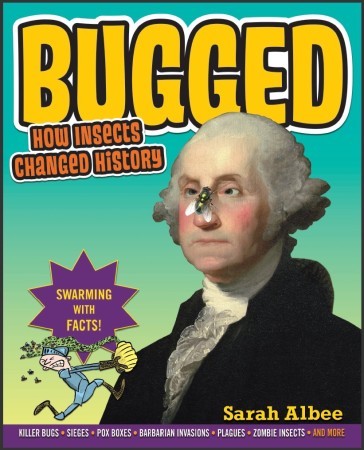 On a positive note—this article in Entomology Todayreports promising results with a clip-on mosquito repellant device.
On a positive note—this article in Entomology Todayreports promising results with a clip-on mosquito repellant device.
The post Murderous Mosquitoes appeared first on Sarah Albee.
February 14, 2016
Teacher Love Book Giveaway
Happy Valentine’s Week!
Teachers and Librarians, I have the honor to be a part of this incredible middle-grade book giveaway, the brainchild of my friend Lynda Mullaly Hunt. It’s to show our author-love for teachers and librarians and reading specialists and all the rest of you educators. One lucky winner will receive these 33 signed recent or soon-to-be-released books. To enter, head over to Lynda’s blogand leave a comment. (I’ll add the specifics at the bottom of this post.) Ready for the lineup? Feast your eyes.



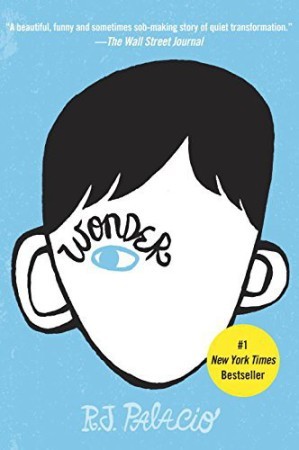





























Here are the rules, which I copied and pasted from Lynda’s site:
Okay–so to enter the MIDDLE GRADE Giveaway to win ALL of these books:
1) Make a comment on [Lynda’s] blog about anything book-related or kid-related. Or teacher/librarian related. Or anything-under-the-sun related.  *Please provide twitter handle or e-mail address with your comment* Also, if you share elsewhere online (Facebook, Google+, etc.) please let me know here.
*Please provide twitter handle or e-mail address with your comment* Also, if you share elsewhere online (Facebook, Google+, etc.) please let me know here.
2) Share to Twitter with the hashtag #MGAuthorsLoveTeachers I know–long hashtag  But it will help us find your entry! Please include link, if possible!
But it will help us find your entry! Please include link, if possible!
Rules: ***Giveaway ends on Saturday, February 20th at 11:59. Winner will be announced Sunday morning.
1) This is to show our appreciation for teachers and librarians, specifically. Therefore, the winner must have a school mailing address and be presently employed at that school. (Sorry–only US and Canadian winners this time.)
***2) We know that teachers do not always get the appreciation they deserve. (They deserve parades and serenades and major awards.) This giveaway is a reminder that WE appreciate you. Yes—we write the books, but YOU get the books into the hands of our readers. Together, we are creating life-long readers. For that we are most grateful.
The post Teacher Love Book Giveaway appeared first on Sarah Albee.
February 8, 2016
Visiting Mount Vernon
Last week, my history-teacher-husband and I traveled to Mount Vernon, the Virginia home of George Washington, for a research trip. The staff at Mount Vernon were beyond amazing. Gail Cassidy gave us an in-depth, specialized tour of the mansion and its surroundings (including special access to places like the basement, and the cupola). We met with Jaclyn Jecha in the education department, and the librarian, Sarah Myers, gave us a personalized, in-depth tour of the library and its holdings. We also met with a Mount Vernon historian (the delightful Mary Thompson), who has written about a billion pages of Mount Vernon history in clear, inviting prose (I told her she needs to write for kids), and who fielded my unending barrage of questions about GW and eighteenth century social history.
I spent long hours in the library, poring through binders and journals and letters that Sarah pulled for my personal use.
I wish I’d taken more pictures, but here are a few:
Our accomodations in the “scholars’ residence”: The entrance to the library:
The entrance to the library: My view from my desk:
My view from my desk: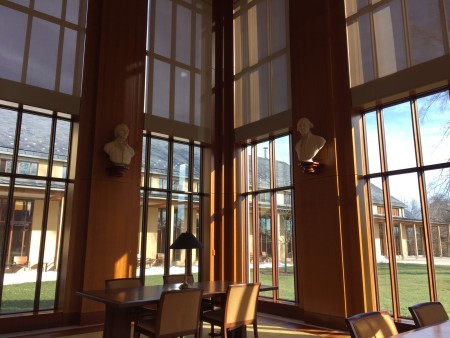 Alexander Hamilton, hovering just above my head and channeling smart-vibes:
Alexander Hamilton, hovering just above my head and channeling smart-vibes: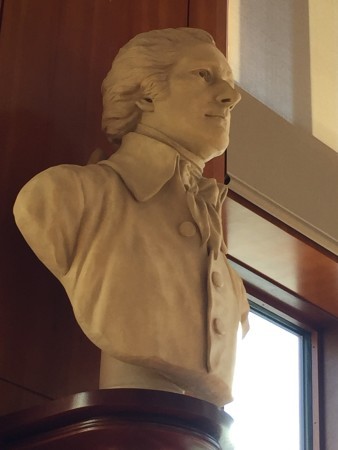 Just some of GW’s papers (they’re still compiling more):
Just some of GW’s papers (they’re still compiling more): The necessary, on the grounds of Mount Vernon:
The necessary, on the grounds of Mount Vernon: A peek inside—yep, a three-seater
A peek inside—yep, a three-seater The dismal slave quarters, which must have been freezing cold in the winter.
The dismal slave quarters, which must have been freezing cold in the winter.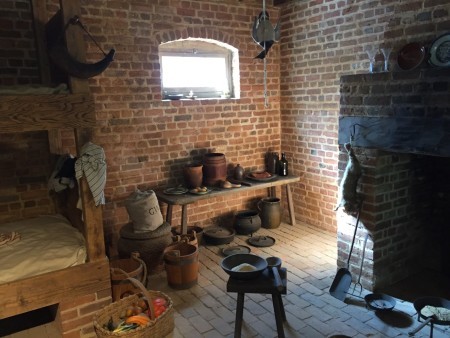 Me standing next to life-sized George. One of the burning questions I had for Mary was how tall WAS he? Some sources say 6’3. But in multiple letters to his tailor, GW himself describes himself as being six feet tall. Mary thinks that’s why his clothes never seemed to fit well. She thinks he was, in fact, just shy of 6’3.
Me standing next to life-sized George. One of the burning questions I had for Mary was how tall WAS he? Some sources say 6’3. But in multiple letters to his tailor, GW himself describes himself as being six feet tall. Mary thinks that’s why his clothes never seemed to fit well. She thinks he was, in fact, just shy of 6’3.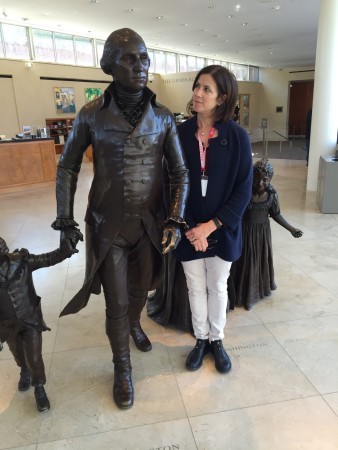 The ha-ha, which runs around the whole upper property and ornamental gardens. What? You don’t know what a ha-ha is? You can read about them here.
The ha-ha, which runs around the whole upper property and ornamental gardens. What? You don’t know what a ha-ha is? You can read about them here.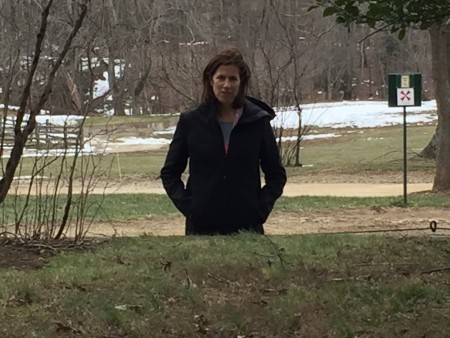
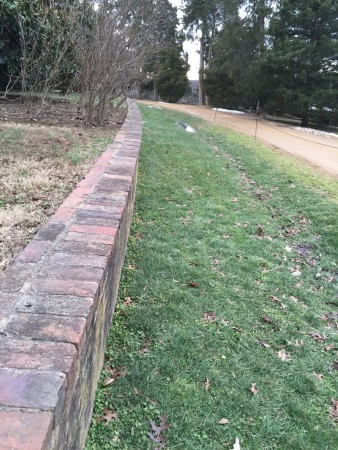 And maybe my favorite thing: here’s GW’s personal copy of the brand-new Constitution. Sarah says he didn’t habitually write in his books, but he did write in this one: can you see where he penciled in “President?” Those would be his perceived duties, as president of the new country.
And maybe my favorite thing: here’s GW’s personal copy of the brand-new Constitution. Sarah says he didn’t habitually write in his books, but he did write in this one: can you see where he penciled in “President?” Those would be his perceived duties, as president of the new country.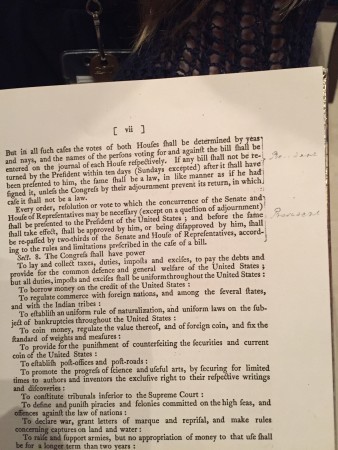
The post Visiting Mount Vernon appeared first on Sarah Albee.
February 2, 2016
Margin Notes from a Master
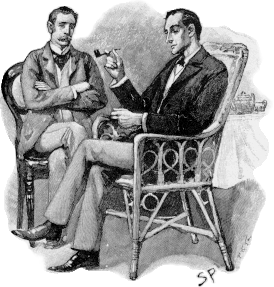 As a kid, I loved detective stories. My favorites were Agatha Christie (I can’t wait to read this new bookabout poisons in Agatha Christie stories). I also devoured Sir Arthur Conan Doyle’s Sherlock Holmes stories. Both Christie and Conan Doyle were not just excellent writers—they were both excellent chemists. It was their stories that sparked my lifelong fascination with poison.
As a kid, I loved detective stories. My favorites were Agatha Christie (I can’t wait to read this new bookabout poisons in Agatha Christie stories). I also devoured Sir Arthur Conan Doyle’s Sherlock Holmes stories. Both Christie and Conan Doyle were not just excellent writers—they were both excellent chemists. It was their stories that sparked my lifelong fascination with poison.
So I was thrilled to discover this award-winning articleat the Baker Street Journal website written by Harold Billings. While a librarian at the University of Texas, Austin, Billings acquired a medical textbook called The Essentials of Materia Medica and Therapeutics, written by Sir Alfred Baring Garrod. The copy is signed Arthur Conan Doyle/Edinburgh University/1878–79.
Conan Doyle was a doctor. He got his medical degree from the University of Edinburgh in 1881. Virtually every page of the book is heavily underlined and annotated in Doyle’s hand.
In one of his margin notes, Conan Doyle describes the effects of arsenic poisoning. Billings points out that it’s written with strange line breaks and punctuated as though in verse. (Conan Doyle does this with other poisons throughout the book.) He conjectures that the verse form may simply have been Conan Doyle amusing himself, or perhaps that he was writing it as a mnemonic device so that he could remember the symptoms. Whatever the reason, it’s one of the most evocative descriptions of the symptoms of arsenic poisoning I’ve seen.
Slow Arsenic Poisoning Vomiting—plenty of stools
Pain in the stomach & bowels
Pulse Wiry. Forehead feels stuffy
Eyes are red and are puffy,
The Last of the symptoms may seem a, Slight one, and that is eczema.
–ACD.

Wellcome Images
The post Margin Notes from a Master appeared first on Sarah Albee.
January 25, 2016
Keeping the Wolf at Bay
Back in medieval times, most of the northern parts of Europe, and big swaths of the British Isles, were covered with dense forest. So close encounters with wolves were quite common. Packs of wolves could—and did—attack grazing livestock, and sometimes people. As a result, they were greatly feared.
A medieval bestiary has this advice if a wolf should surprise a person unexpectedly, and it has some real modern-day applications. Stay with me, here.
 First off, should you see a wolf, you will most probably be rendered mute—that is, you’ll lose the power to cry for help. So what you’re supposed to do is, take off all your clothes immediately. Throw them onto the ground and stomp on them. Then find two stones and clomp them together. Your speech will be restored. It’s unclear what happens next, vis a vis the wolf. But at least your speech has been restored.
First off, should you see a wolf, you will most probably be rendered mute—that is, you’ll lose the power to cry for help. So what you’re supposed to do is, take off all your clothes immediately. Throw them onto the ground and stomp on them. Then find two stones and clomp them together. Your speech will be restored. It’s unclear what happens next, vis a vis the wolf. But at least your speech has been restored.
Today, wolves are, sadly, a threatened species in parts of the world. So chances are you don’t have to worry about coming across one near you. So how is this advice relevant for you? Why, think about it. Next time you have to deliver a presentation at school, and are worried about forgetting your lines, simply take off all your clothes and stomp on them. Then deliver your speech. The words will pour forth with no effort whatsoever.
You’re welcome.
http://britishlibrary.typepad.co.uk/d...
The post Keeping the Wolf at Bay appeared first on Sarah Albee.
January 18, 2016
Scarred for Life
I find the coolest stuff doing image research. Often it has nothing to do with the book I’m researching at the moment, but it’s what makes my job so awesome. Case in point: I stumbled across this portrait of the composer Christoph Willibald von Gluck, (1714 -1787) by the painter Joseph Duplessis, painted around 1775. And I was amazed—are those smallpox scars on his face?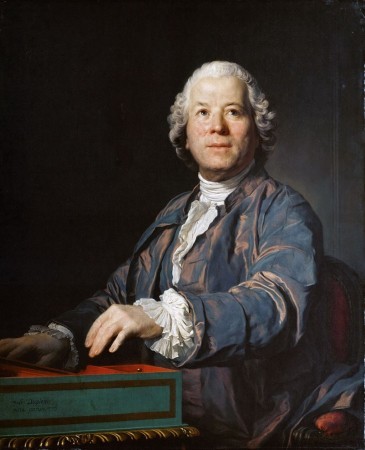 Smallpox was the scourge of the eighteenth century, and vast numbers of people who managed to survive the disease were scarred with pitted faces, but you so rarely see such realistic depictions in portraits from the time. (For instance, George Washington survived smallpox, but Gilbert Stuart, his go-to portraitist from about the same era as Duplessis, painted GW with a smooth countenance.)
Smallpox was the scourge of the eighteenth century, and vast numbers of people who managed to survive the disease were scarred with pitted faces, but you so rarely see such realistic depictions in portraits from the time. (For instance, George Washington survived smallpox, but Gilbert Stuart, his go-to portraitist from about the same era as Duplessis, painted GW with a smooth countenance.) I’ve always liked Gluck (here’s one of his more famous pieces). I looked him up, and sure enough, Gluck had had smallpox, and his face was badly scarred. Then I found another depiction of him, by the sculptor Jean Antoine Houdon. Woah.
I’ve always liked Gluck (here’s one of his more famous pieces). I looked him up, and sure enough, Gluck had had smallpox, and his face was badly scarred. Then I found another depiction of him, by the sculptor Jean Antoine Houdon. Woah.

The post Scarred for Life appeared first on Sarah Albee.
January 11, 2016
That’s Classic
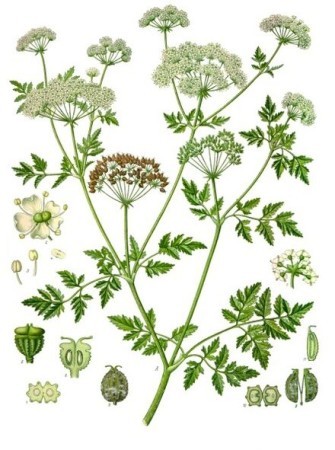 This is poison hemlock, or Conium maculatum. Its leaves look a lot like flat-leaf parsley, don’t they? That similarity was unfortunate for one man, a Scottish tailor named Duncan Gow. In 1845 his children made him a sandwich for his lunch using what they thought was wild parsley. (My warped mind turns straight to–when was the last time all three of my children got together to make ME a sandwich? And would they ever in a million years think to add parsley to it?? But I digress.)
This is poison hemlock, or Conium maculatum. Its leaves look a lot like flat-leaf parsley, don’t they? That similarity was unfortunate for one man, a Scottish tailor named Duncan Gow. In 1845 his children made him a sandwich for his lunch using what they thought was wild parsley. (My warped mind turns straight to–when was the last time all three of my children got together to make ME a sandwich? And would they ever in a million years think to add parsley to it?? But I digress.)
The “wild parsley” turned out to be poison hemlock, and Gow died. His death recalled that of another, more famous person who died by hemlock, the philosopher Socrates (ca 469 – 399 BCE).

The Death of Socrates in a 1790s rendition by Jean François Pierre Peyron
Socrates was sentenced to death for refusing to recognize the gods approved by the state, and for “corrupting the youth.” He was ordered to drink poison hemlock. According to an eyewitness account written by Plato, Socrates’s death was a gentle one, surrounded by his devoted followers. After drinking the poison, his feet went numb, and the paralysis slowly crept upward. “His legs grew cold and stiff,” and after that, his respiratory muscles became paralyzed. His mind remained clear to the end, though. His last words were “Crio, we owe Asklepias a rooster. Pay the debt and do not forget it.”
For several centuries, historians had debated whether Plato’s account of Socrates’ death was medically accurate. They didn’t believe that death by hemlock could have been as peaceful as Plato said it was. But Duncan Gow’s symptoms sound remarkably similar to those of Socrates.
So it seems Plato’s account may have been medically accurate.

Not a great picture, sorry, but it was exciting to see actual poison hemlock at the poison plant garden at Cornell University.
The post That’s Classic appeared first on Sarah Albee.



